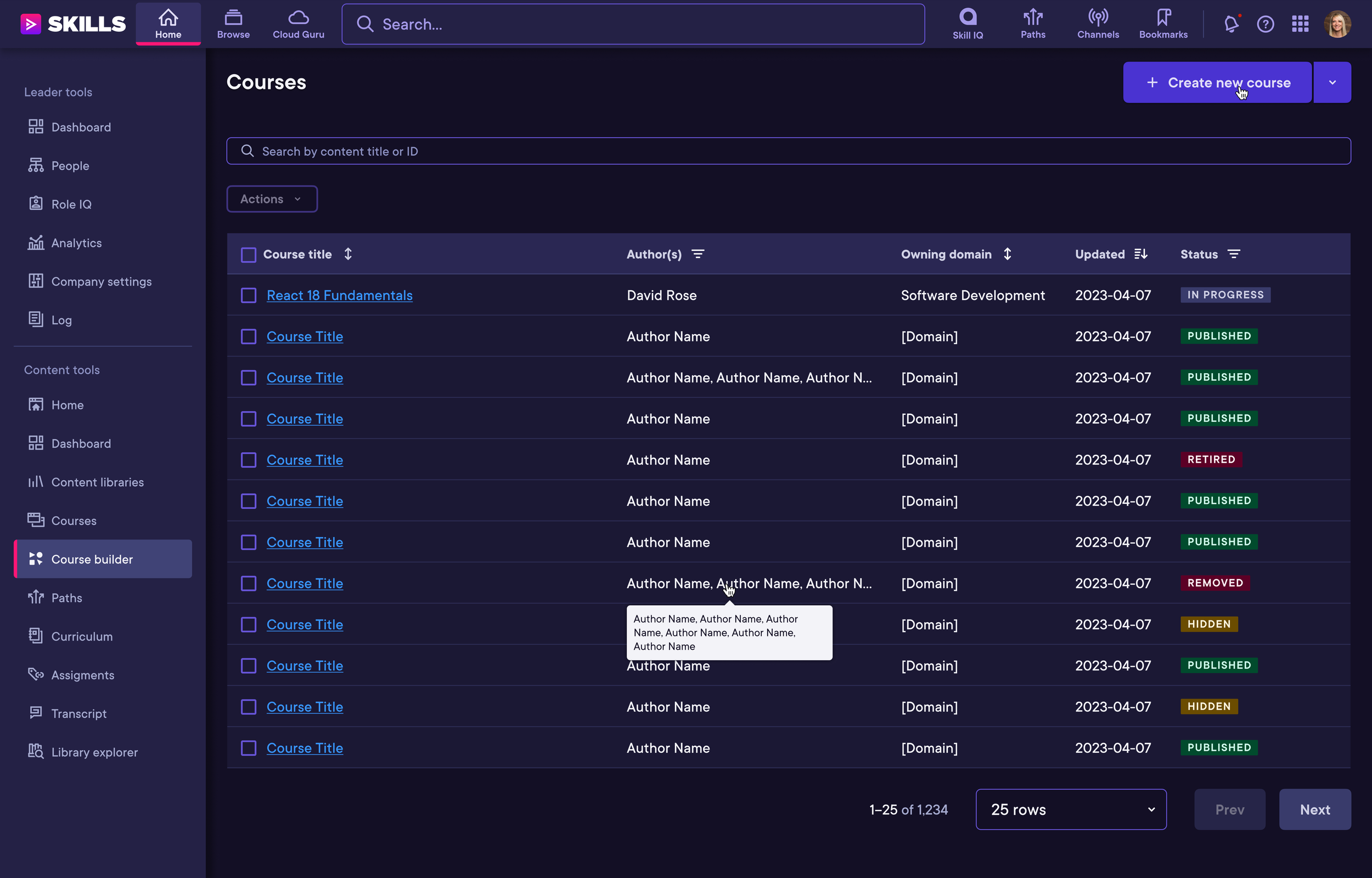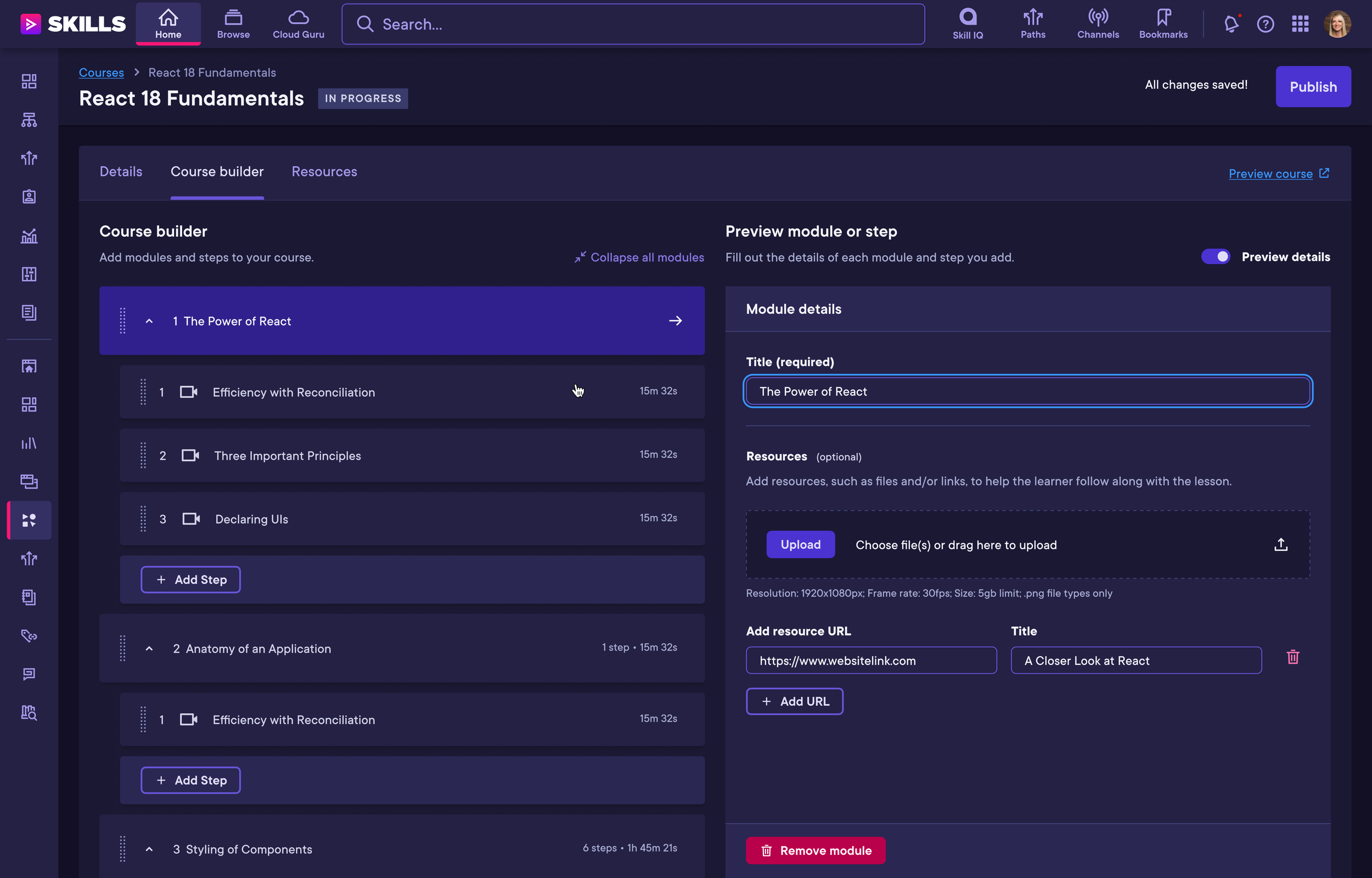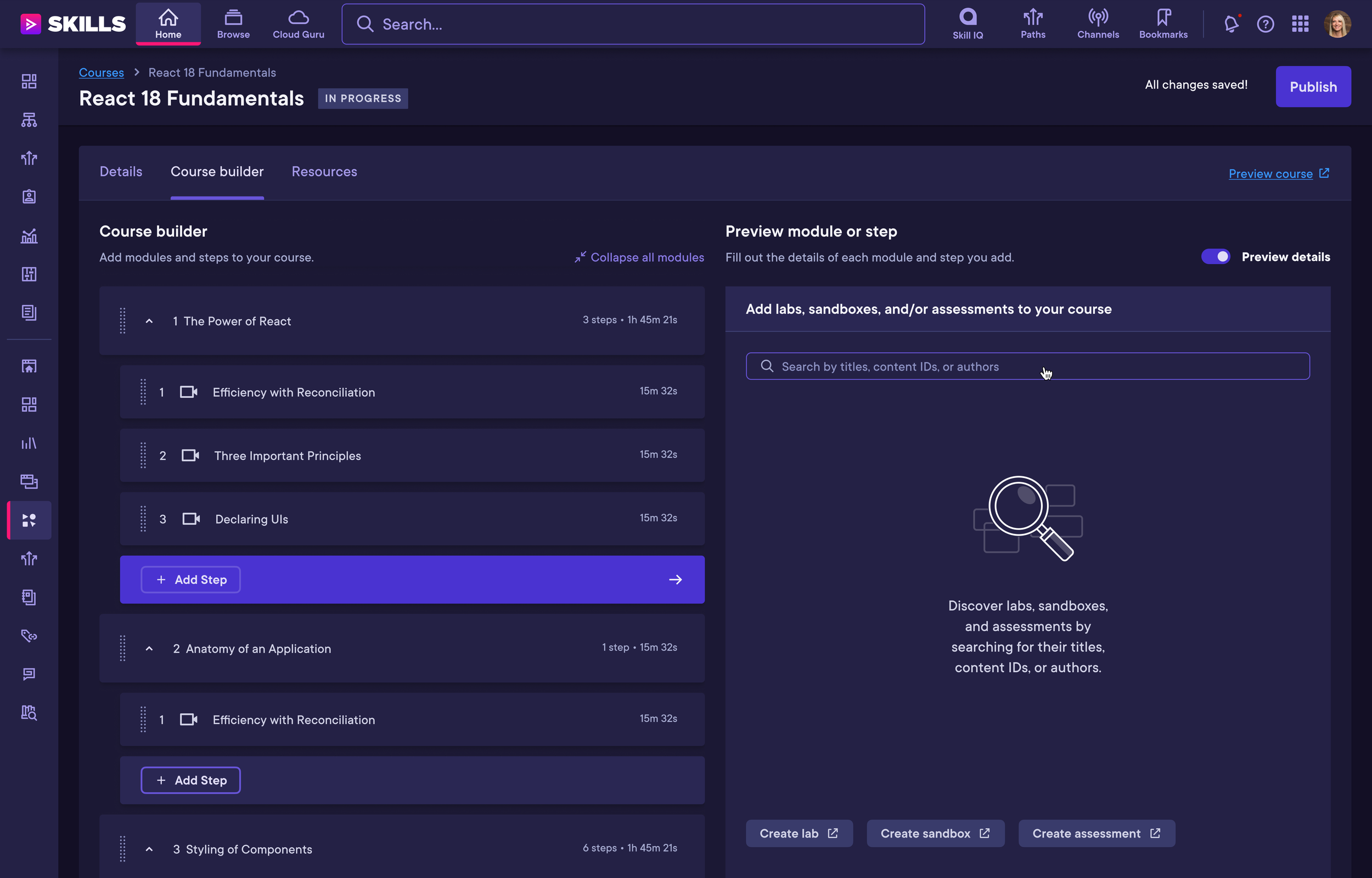ILX Course Builder
A Case Study
My Role
Discovery • UX research • Sketching + Wireframing • Visual design • Clickable prototypes (I was the only designer on this project)
The Problem
Previously, content creators (authors and content producers) lacked the ability to integrate multiple modalities (videos, labs, assessments) within a single course. Each modality was confined to its respective course type, like video-only or lab-only courses. This segregation hindered effective learning as learners transitioned between different course types, resulting in fragmented learning experiences. Learners sought more seamless access to hands-on content without losing context.
The Solution
As a vital component of our overarching vision for the United Content Platform, the Course Builder MVP serves as the central hub for content creators. By using this tooling, they’ll be able to seamlessly assemble courses with diverse content types, from videos to labs to assessments, fostering an intuitive and efficient content creation process, which will then serve to learners through the ILX Player (which is highlighted in the next project).
MY UX Design Process
Discovery
The discovery was initially done with the United Content Platform work, which helped inform us that we needed to build a course building tool.
RESEARCH
For my competitor analysis, I went to every one of our competitors to check out other building tools, such as A Cloud Guru, Coursera, Udemy, Rise360, Easy Generator, and YouTube. I also looked at the separate internal content tooling Pluralsight had.
Bird’s eye view showing screenshots of Pluralsight’s & competitors’ tooling.
Ideate
After chatting with several authors and content producers, and doing my competitor analysis, I took note of their design patterns, features, and ux. I started a FigJam file to note the jobs-to-be-done and user flows to later validate with stakeholders. Then I started sketching from those ideas by taking the best of each feature and create something that I felt would best help our creators.
FigJam board showing types of users and their jobs to be done; then worked on their user flows.
Initial sketches of the Course Builder Tool.
First round of wireframes of the Course Builder Tool to validate among stakeholders & users.
High-fidelity Prototype
After some initial validation, I moved over to higher fidelity designs. For the MVP version, we still have things to work out with video tooling, so for now, authors and content producers can search for already-published video courses and add labs & assessments to them. Once video tooling gets fully integrated, they will be able to create a course from scratch.























results
Due to the Pluralsight layoffs in early 2024, I wasn’t able to see this project through. Early data I got after its release was that 100% of legacy content was successfully integrated through the new tool. Since its release, adoption rates have steadily increased, time to complete courses has decreased, and operational costs have been reduced.
Here are more things I would like to have measured after the builder’s release:
Usage Metrics: The adoption rate of the tool among authors over time; frequency of tool usage to create or update their courses; Time spent using the tool per session.
Efficiency Metrics: Time saved using the tool compared to the older ones; reduction in back-and-forth communication between authors and internal team members; Course Creation/update time in comparison to old tooling.
Quality Metrics: Course building completion rate by authors; content consistency and the quality of courses created; user satisfaction where we gather feedback from authors using surveys or interviews to understand their satisfaction with the tool and its features.
Impact on Business Goals: Time to market to determine of the tool has helped reduce the time it takes to publish new courses on the platform; Course throughput to see if the tool has increased the number of courses being published on the platform; Revenue generation through improved course quality learner engagement or retention.
Operational Metrics: Monitor the number of support tickets or inquiries related to the tool to identify any usability issues or areas for improvement; System performance to track system uptime, response times, and any technical issues encountered by authors while using the tool.
Next Steps
With the initial release of the Course Builder MVP, next up will be adding resource files that will be uploaded through the builder, and served via ILX Player so that learners can access additional resources for their courses. Video tooling will be incorporated hopefully by the end of 2024.






